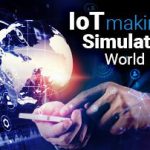IoT Trends | The IoT Curator:: August 2017
Highlights
- IoT Cloud Platform: Why is cloud essential for manufacturers?
- Five Whys and its relevance in IoT age
- Industrial IoT Security & its two levels
- Why is Industrial IoT a different ball game from consumer IoT?
First of all, we would like to thank you for the positive response that we received for the first edition of the IoT curator. Boosted by your feedback, we will be publishing this feature monthly to keep you all updated with the latest trends, thought breaking takes around the IoT & industrial world that we got our hands on this week. So here is our take on the pick for this month:
Why do you need the cloud for manufacturing?
A large debate that our Team often encounters during various implementations for IIoT is the necessity of cloud in an IoT setup. Old school practitioners often find cloud an unnecessary and risky expense. However what they fail to understand and comprehend is the sheer agility and flexibility that comes with a cloud implementation. The stakeholders spread across various locations & time zones can access the data rapidly, anywhere anytime. This leads to proactive decision making and increased collaboration across the value chain. Subsequently, the error-prone, manual, document-heavy processes are now replaced with cloud-powered streamlined, on-demand workflows. Coupled with IoT, Manufacturers are now able to reduce costs significantly from improved productivity, fewer errors, and real-time visibility. Learn more about this in the article the Impact of the Cloud on Manufacturing (highlighting the need for an IoT Cloud Platform).
Five Whys & IoT
5 Whys is an iterative interrogative technique developed by Sakichi Toyoda, from Toyota. It is used to explore the cause-and-effect relationships underlying a particular problem. The technique specifies that an iteration of ‘why’ at least 5 times, can lead to the root cause of the problem. This technique is relevant for ages can be propelled to newer heights powered by IoT and machine learning, to not just find the root cause but also provide prescriptive measures for problem prevention. With real-time, accurate datasets that are obtained from the machines themselves and technologies that help sift patterns through them, five why can now lead to greater traceability. With greater strides in AI, this process can be automated, and machines can now themselves answer these questions providing fast and actionable solutions in the process. Read more about how this can happen and further analysis in the article In the Time of Big Data and Machine Learning, It’s Important to Ask “Why?”
Industrial IoT Security & its two levels
A recent survey with security professionals revealed that 42% of them expect IoT device to pose the biggest security risk for their networks. On the other hand, the unimagined potential for IoT is making it a necessity for all industries, bar none. The devices used for IIoT are typically small and with low computing power, making it easier for hackers to hack into. Hence, it is time for the industry to wake up and work on a proactive approach against these. The two levels of these are Visibility and Control. For the first level, an inventory of physical devices , which include not just known and authorized devices, but also unauthorized or previously unmanaged devices, such as security cameras, monitors, machine sensors and other devices that have been plugged into the company’s network by employees or vendors without the IT department’s knowledge or participation through either a physical inspection of facilities or the use of network profiling technology. The internet activity also needs to be monitored for the same purpose. The second step, control, involves extending the security capabilities of the individual devices as well as adjusting the organization’s network architecture, operational and management practices, and security protocols. Every device should be updated and regular security assessments need to be carried out. To know about this in detail, read the article IoT Security: A Two-Pronged Defense Strategy for Manufacturers.
Why is IIoT a different ball game from consumer IoT?
When the world was first introduced to IoT, they were bedazzled by the consumer related applications-the home automation, the fitbits etc. On the other hand, IIoT, its industrial cousin, seemed pretty lackluster until recently. However, it is this variant of IoT, that holds a huge potential to revolutionize the world as we see it. Here is why IIoT holds the fort against more challenges than its consumer variant- IIoT systems need to be robust since they are used in unfriendly hazardous environments with high temperatures, humidity, and corrosiveness like a wastage plant, oil wells, against a Fitbit where the greatest danger is a splash of water. They should be also highly scalable due to the sheer amount of data generated, and intelligent enough not to overwhelm/burden the centralized data. This is where edge computing is making an appearance. On the consumer side, there are limited data points, hence this is not a concern. Also due to the criticality of the same data, IIoT systems need stronger cybersecurity measures than consumer devices any day. To learn more about this, read the article Consumer IoT vs. Industrial IoT – What are the Differences?




